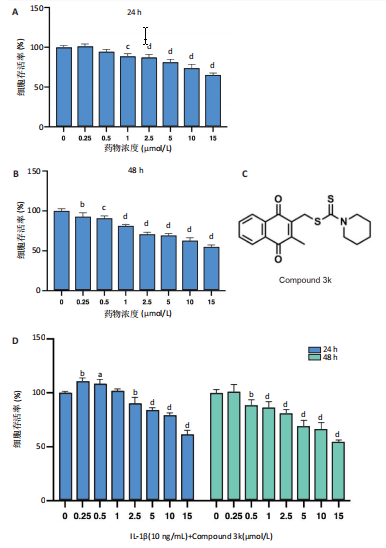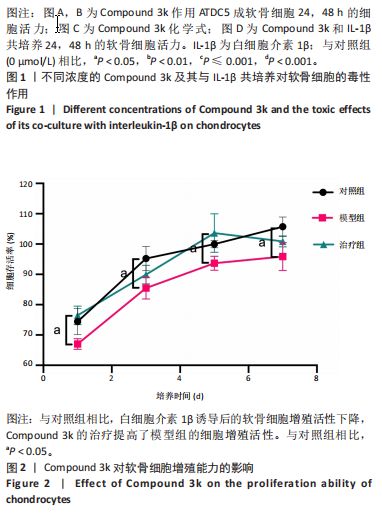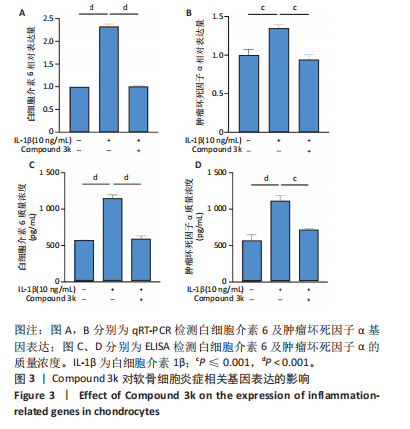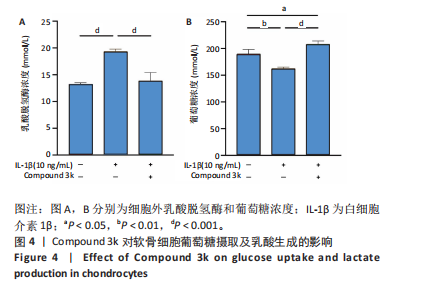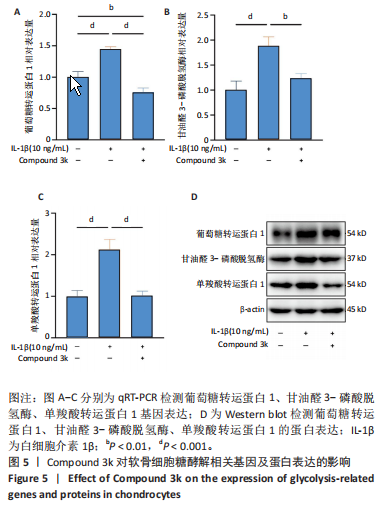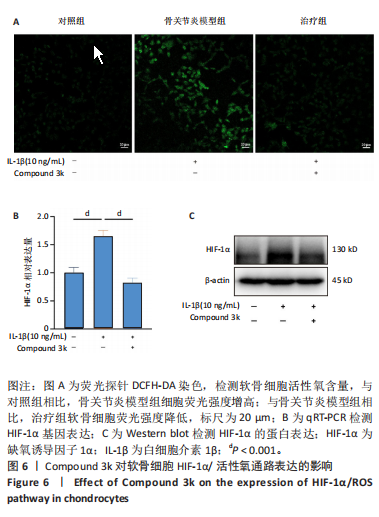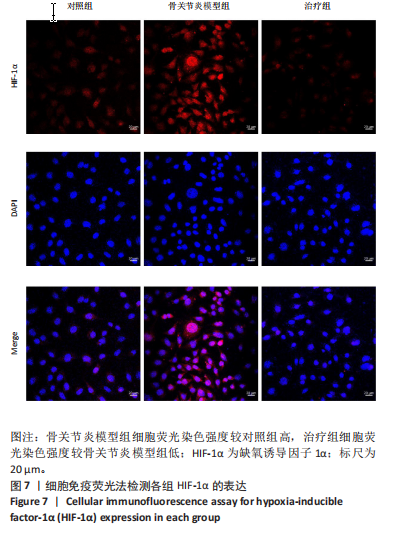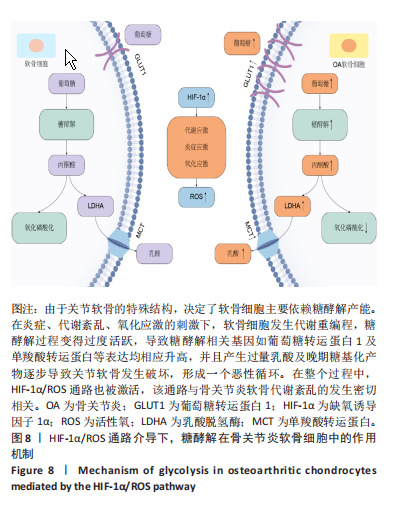[1] GOLDRING MB, GOLDRING SR. Osteoarthritis. J Cell Physiol. 2007;213(3):626-634.
[2] HAWKER GA. Osteoarthritis is a serious disease. Clin Exp Rheumatol. 2019;37 Suppl 120(5):3-6.
[3] MOBASHERI A, RAYMAN MP, GUALILLO O, et al. The role of metabolism in the pathogenesis of osteoarthritis. Nat Rev Rheumatol. 2017;13(5):302-311.
[4] ALLEN KD, THOMA LM, GOLIGHTLY YM. Epidemiology of osteoarthritis. Osteoarthritis Cartilage. 2022;30(2):184-195.
[5] BARBOUR KE, HELMICK CG, BORING M, et al. Vital signs: prevalence of doctor-diagnosed arthritis and arthritis-attributable activity limitation-United States, 2013-2015. MMWR Morb Mortal Wkly Rep. 2017;66(9):246-253.
[6] KRASNOKUTSKY S, SAMUELS J, ABRAMSON SB. Osteoarthritis in 2007. Bull NYU Hosp Jt Dis. 2007;65(3):222-228.
[7] 魏洁雅,张德茂,谢静,等.软骨细胞葡萄糖代谢研究的新进展[J].四川大学学报(医学版),2021,52(6):923-928.
[8] MARCONI A, HANCOCkK-RONEMUS A, GILLIS JA. Adult chondrogenesis and spontaneous cartilage repair in the skate, Leucoraja erinacea. Elife. 2020;9:e53414.
[9] 刘耀升,刘蜀彬.软骨组织工程研究中细胞源-软骨细胞和成纤维细胞[J].中国组织工程研究与临床康复,2009,13(11):2123-2126.
[10] TAN C, LI L, HAN J, et al. A new strategy for osteoarthritis therapy: Inhibition of glycolysis. Front Pharmacol. 2022;13:1057229.
[11] KONG P, CHEN R, ZOU FQ, et al. HIF-1α repairs degenerative chondrocyte glycolytic metabolism by the transcriptional regulation of Runx2. Eur Rev Med Pharmacol Sci. 2021;25(3):1206-1214.
[12] 邵婉珍,张风娥,王森,等.糖代谢紊乱对大骨节病软骨细胞功能的影响[J].四川大学学报(医学版),2018,49(2):221-225,270.
[13] ARRA M, SWARNKAR G, KE K, et al. LDHA-mediated ROS generation in chondrocytes is a potential therapeutic target for osteoarthritis. Nat Commun. 2020;11(1):3427.
[14] SONG K, LI B, CHEN YY, et al. LRPPRC regulates metastasis and glycolysis by modulating autophagy and the ROS/HIF1-α pathway in retinoblastoma. Mol Ther Oncolytics. 2021;22:582-591.
[15] LOHBERGER B, KALTENEGGER H, ECK N, et al. Shikonin derivatives inhibit inflammation processes and modulate MAPK signaling in human healthy and osteoarthritis chondrocytes. Int J Mol Sci. 2022;23(6):3396.
[16] WANG A, FANG S, ZHONG L, et al. Shikonin, a promising therapeutic drug for osteoarthritis that acts via autophagy activation. Int Immunopharmacol. 2022;106:108563.
[17] NING X, QI H, LI R, et al. Discovery of novel naphthoquinone derivatives as inhibitors of the tumor cell specific M2 isoform of pyruvate kinase. Eur J Med Chem. 2017;138:343-352.
[18] 乔祺惠,周青.颞下颌关节骨关节病物理及药物治疗研究进展[J].中国实用口腔科杂志,2018,11(9):557-563.
[19] SELLAM J, BERENBAUM F. Is osteoarthritis a metabolic disease? Joint Bone Spine. 2013;80(6):568-573.
[20] Chen J, Gu YT, Xie JJ, et al. Gastrodin reduces IL-1β-induced apoptosis, inflammation, and matrix catabolism in osteoarthritis chondrocytes and attenuates rat cartilage degeneration in vivo. Biomed Pharmacother. 2018;97:642-651.
[21] Sun FF, Hu PF, Xiong Y, et al. Tricetin protects rat chondrocytes against IL-1β-induced inflammation and apoptosis. Oxid Med Cell Longev. 2019;2019:4695381.
[22] 戴金凤. 多不饱和脂肪酸影响胃癌细胞生长的机理[D].杭州:浙江大学,2013:87.
[23] CHANDEL NS. Glycolysis. Cold Spring Harb Perspect Biol. 2021;13(5): a040535.
[24] JUDGE A, DODD MS. Metabolism. Essays Biochem. 2020;64(4):607-647.
[25] ZHENG L, ZHANG Z, SHENG P, et al. The role of metabolism in chondrocyte dysfunction and the progression of osteoarthritis. Ageing Res Rev. 2021;66:101249.
[26] RASHEED Z, AKHTAR N, HAQQI TM. Advanced glycation end products induce the expression of interleukin-6 and interleukin-8 by receptor for advanced glycation end product-mediated activation of mitogen-activated protein kinases and nuclear factor-κB in human osteoarthritis chondrocytes. Rheumatology (Oxford). 2011;50(5):838-851.
[27] BUSTAMANTE MF, OLIVEIRA PG, GARCIA-CARBONELLl R, et al. Hexokinase 2 as a novel selective metabolic target for rheumatoid arthritis. Ann Rheum Dis. 2018;77(11):1636-1643.
[28] YANG X, CHEN W, ZHAO X, et al. Pyruvate kinase M2 modulates the glycolysis of chondrocyte and extracellular matrix in osteoarthritis. DNA Cell Biol. 2018;37(3):271-277.
[29] BEDARD PL, HYMAN DM, DAVIDS MS, et al. Small molecules, big impact: 20 years of targeted therapy in oncology. Lancet. 2020; 395(10229):1078-1088.
[30] XU F, GUO M, HUANG W, et al. Annexin A5 regulates hepatic macrophage polarization via directly targeting PKM2 and ameliorates NASH. Redox Biol. 2020;36:101634.
[31] PARK JH, KUNDU A, LEE SH, et al. Specific pyruvate kinase M2 inhibitor, compound 3K, induces autophagic cell death through disruption of the glycolysis pathway in ovarian cancer cells. Int J Biol Sci. 2021;17(8): 1895-1908.
[32] ZENG CY, WANG XF, HUA FZ. HIF-1α in Osteoarthritis: from pathogenesis to therapeutic implications. Front Pharmacol. 2022;13:927126.
[33] WANG P, XIONG X, ZHANG J, et al. Icariin increases chondrocyte vitality by promoting hypoxia-inducible factor-1α expression and anaerobic glycolysis. Knee. 2020;27(1):18-25.
[34] PARK WH. Effects of antioxidants and MAPK inhibitors on cell death and reactive oxygen species levels in H2O2-treated human pulmonary fibroblasts. Oncol Lett. 2013;5(5):1633-1638.
[35] TAPEINOS C, LARRANAGA A, SARASUA JR, et al. Functionalised collagen spheres reduce H2O2 mediated apoptosis by scavenging overexpressed ROS. Nanomedicine. 2018;14(7):2397-2405.
[36] CHENG J, YANG HL, GU CJ, et al. Melatonin restricts the viability and angiogenesis of vascular endothelial cells by suppressing HIF-1α/ROS/VEGF. Int J Mol Med. 2019;43(2):945-955.
[37] WANG D, ZHAO W, LIU J, et al. Effects of HIF-1α on spermatogenesis of varicocele rats by regulating VEGF/PI3K/Akt signaling pathway. Reprod Sci. 2021;28(4):1161-1174. |
